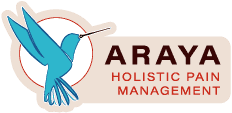Ahhhh, there’s nothing like a good massage. This relatable sentiment goes back at least 4,000 years as humans of long ago recognized the benefits of touch and tissue manipulation. Evidence of massage as a healing practice in the ancient world can be found in India, Egypt and China.
The importance of human touch and connection may seem obvious, but we can look at some of the science behind it. Our skin is our largest organ and has been referred to as the ‘third brain’ (the gut being our ‘second brain’ ) because of the way that it is innervated with millions of sensory receptors that serve as our primary physical interface with the world. Sensory information from the skin transmits info to the brain to affect our moods and physiology. Comfortable human touch has been shown to activate the parasympathetic nervous system, bringing us into a more relaxed state. This involves a shift that lowers stress hormones, such as cortisol and adrenaline. As stress hormone levels drop, other beneficial bio-chemicals are released, such as oxytocin, the hormone responsible for trust and bonding. Serotonin and dopamine levels also go up. These are brain chemicals associated with vitality and well-being. A welcomed massage can offer positive adjustments in blood pressure, blood sugar, anxiety levels, sleep, and immunity.
Besides these benefits of simply connecting through touch, there are also the therapeutic effects of actually manipulating the tissues. Applying pressure, pulling, stretching, and releasing trigger points (parts of a muscle that has gone into spasm and causes the rest of the muscle to tighten) contributes to an overall improvement in musculoskeletal issues.
Massage helps to release pressure from joints and muscles while loosening and lengthening constricted fascia, our internal web of connective tissue. Therapeutic massage is associated with pain and anxiety reduction in various research studies. I can definitely say for myself that I have fallen asleep during massage or go into a deep relaxation.
In Chinese medicine terms, massage is all about the release of blockages to open up the flow of qi (energy), which activates innate healing mechanisms. Tui Na, one of the 4 main branches of Chinese medicine (along with acupuncture, qi gong, and herbs) is believed to be the oldest system of bodywork. It is thought to stimulate the flow of qi by targeting specific acupoints and channels. Many various techniques are used, and referred to as: palpating, rejoining, opposing, lifting, pressing, kneading, pushing, holding, rolling, one-finger technique, nei gung (full body manipulation). Tui Na is a powerful therapy that has been credited with positive effects on pain and stress levels, circulation, and overall health. Studies on neck pain, back pain, osteoarthritis, carpal tunnel, depression, diabetic feet, and even lactation support these claims.
In addition to Tui Na, Chinese medicine offers acupressure and reflexology massage as well as ‘massage-like’ modalities including cupping and gua sha. Cupping uses suction cups to decompress tight tissues and improve microcirculation, while gua sha uses smooth tools to apply therapeutic friction to areas of stagnation in the body. Some discomfort and slight bruising is possible, but for most people, it is a relaxing experience that brings much appreciated pain and inflammation relief, detoxification and regeneration of tissues.
While being on the passive receiving end of a massage is arguably the best place to be in this world, sometimes we need to rely on self-massage to hold us over. There is an acupressure point called Joining Valley (LI:4 , He Gu) located between the base of the thumb and index finger that is easy to access and is a powerful point for moving all the qi in the body, making it great for many conditions. Another easy but powerful self-care practice is ear massage. While gently rubbing and stretching our outer ear we are accessing a reflexology system as well as stimulating the vagus nerve, which can help with sleep, digestion, anxiety and pain. And for the simplest approach, there is always what TCM practitioners call ‘Yin touch’: just holding certain parts of the body (with love, of course) such as the belly, head, sore elbow, etc. We all have the healing power of touch whether we use it on ourselves or others.
If you’ve been relying on self-massage, it’s time to get in for a relaxing acupuncture session, which may include some form of bodywork or massage chosen specifically for you and your needs.
Resources:
- https://florida-academy.edu/history-of-massage-therapy/
- https://www.massagemag.com/new-massage-research-is-uncovering-the-why-behind-touch-benefits-124862/
- https://www.massagemag.com/new-massage-research-is-uncovering-the-why-behind-touch-benefits-124862/
- https://www.massagemag.com/research-studies/
- https://www.stress.org/contentment-connection-easy-ways-to-nourish-your-vagus-nerve-to-become-more-content
- https://www.healthline.com/health/tuina
- http://angeladraper.com/angela-draper-acupuncture/why-you-should-try-gua-sha-and-cupping-additional-acupuncture-therapies-that-treat-beyond-pain
- https://www.stress.org/contentment-connection-easy-ways-to-nourish-your-vagus-nerve-to-become-more-content





